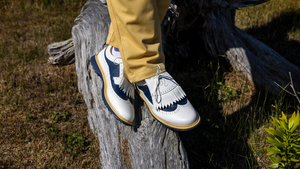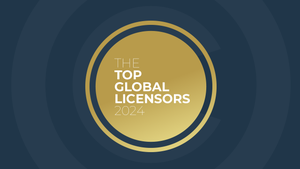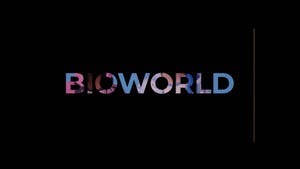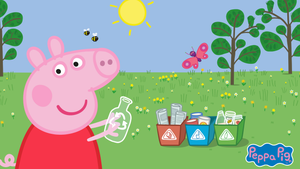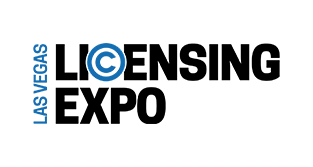The Hautman Brothers have turned their talent into a $62 million licensing program based on their passion for painting and an appreciation for the beauty of the great outdoors. There is plenty of beauty in the natural worl
April 6, 2018

The Hautman Brothers have turned their talent into a $62 million licensing program based on their passion for painting and an appreciation for the beauty of the great outdoors.
There is plenty of beauty in the natural world and there's no need to embellish upon what already exists. This is a defining philosophy for the Hautman Brothers, a trio of fine artists who are renowned for their paintings that depict wildlife themes that range from mallards sailing beneath a cedar tree to tigers staking their claim in the wild.
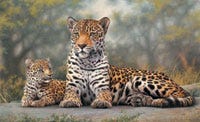
The talented team, made up of brothers James, Robert, and Joe, has been recognized with many prestigious awards. James Hautman, whose career began to take off in 1989 at the age of 25, is credited as the youngest artist in history to win the esteemed Federal Duck Stamp Award. Since then, the artist seized the award twice more, becoming only the second artist in competition history to be honored a total of three times.
Like James, his brother Robert's artistic achievements are quite plentiful. He was awarded winner of the Federal Duck Stamp contests in both 2001 and 1997. Continuing to draw inspiration from his rustic surroundings, Robert and his wife live on a hobby farm in rural Minnesota. The eldest of the three brothers, Joe Hautman, also was the proud recipient of the Federal Duck Stamp honors in 1992 and 2002. Recently, he was commissioned by the United Nations to create a series of endangered-species stamp designs.
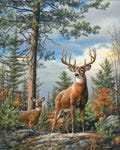
While growing up, the team of brothers called St. Louis Park, Minn., home, so it was there, amid a picturesque nature-themed backdrop, that they developed an appreciation for the beauty of the great outdoors. Avid fishermen, hunters, and bird watchers, the brothers recognized the splendor of their surroundings and were inspired by the wildlife they encountered.
Today, it is not uncommon for the Hautman brothers to travel together to remote locations to observe animals while they are in their natural state. Known for their accuracy and keen attention to detail, the artists strive to capture the authenticity of an animal's habits or its natural environment. The artists also remain loyal to a color palette that is solely derived from nature.
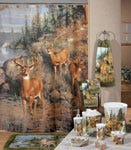
The Hautman Brothers have been licensing their wildlife-themed artwork since 1995 and were among the first to join agent MHS Licensing's client base. Throws were the first major category to launch through a partnership with Biederlack of America, which still remains one of Hautman's top licensees. Today, the brothers have successfully signed on more than 75 licensees that create everything from music boxes to checks, rugs, and medical scrubs. With all of their fame and success, the Hautman Brothers still remain a three-man team.
Current retail sales of licensed merchandise amounted to a staggering $62 million for 2006 vs. $60 million in 2005—an increase of 3.3 percent. Key categories include bedding and bath, over-the-counter fabric, and tabletop items such as coasters and cutting boards. The textile categories, which tend to be the strongest programs, often lead to ancillary sales of other home decor items and accessories.
Two key demographic groups are drawn to Hautman's product. The "cute" imagery that delicately portrays songbirds, butterflies, and fawns naturally attracts female consumers who purchase tabletop, cross-stitch kits, and checks. However, men are drawn to the rugged hunting themes that capture the grace and beauty of whitetail deer and elk, as well as fishing themes that depict ducks, bass, and trout. Rugs, auto accessories, mugs, and shot glasses are popular with this demographic.
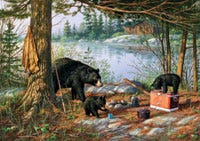
The Hautman brothers' passion for painting originals is first and foremost, as they consider themselves fine artists rather than commercial artists. Many of their fans purchase their originals and prints, but if there's a secondary use for their images to be licensed onto products, that's all the better. "As their agents, our business model is to develop and manage their program strategically and profitably without endangering their original and print business," says Marty Segelbaum, president, MHS Licensing. "We have been very successful doing that so far." Although much of their time is spent creating work commissioned by collectors, the artists do paint specific images in order to fulfill the needs of their licensing programs.
Throughout the years, there's been a shift in the way the licensing program has been managed. "Originally we licensed the Hautman Brothers by category without regard for channel segmentation. As the program evolved and the channels became more differentiated (for example, mass, mid-tier, catalog, and gift stores), we've developed differentiated collections and sub-brands within the Hautman Brothers program," says Segelbaum.
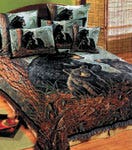
Products are sold through nearly every retail channel, from the specialty-store level to mass retailers such as Kmart and Wal-Mart. The "Hautman Brothers Collection" is solely distributed through better channels, while the "Hautman Brothers" line, which incorporates different logos and is based on a different set of style guides, is specifically designated for mass retailers. Catalogs such as National Wildlife and Cabela's also offer Hautman product.
Since high quality and authenticity is at the core of the Hautman brothers' work, managing the licensing business and communicating with licensees is a top priority. In an effort to ensure a high level of excellence, account executives are assigned to each licensee, working directly with them to share new images, discuss new product ideas, approve product, and ensure strong representation in the catalogs and advertising. "We try to coordinate the activities and design direction of corresponding categories such as bedding, bath, and rugs, so retailers can make strong coordinated statements," says Segelbaum.
Segelbaum has received quite a number of calls from retailers who ask if the property has been licensed into specific categories. "When told 'no,' they tell us what they want and who they want to buy it from," he says. "We are then able to call that manufacturer, tell them about Hautman Brothers, and let them know we already have their first customer on board. In this scenario, everybody wins."
Working with leaders in each category and those with a specific objective for expanding their merchandise assortment to include Hautman Brothers by building their business in specific channels (such as sporting goods) is top of mind. Strong retail relationships and knowledge of their categories are another must-have for licensing partners. "They have to be committed to the brand," says Segelbaum. "With more than 300 licensable images, we don't want to tie up the whole collection with a partner that only plans on using an image or two."
Along with the other art licensors, the Hautman Brothers are feeling the effects of a consolidated retail environment. "With the diminishing number of significant retailers and manufacturers, the pressure to grant exclusivity and custom programs continues to increase. This is compounded by the shorter attention spans of the consumers and, therefore, the retailers," says Segelbaum. "It creates a very large appetite for new images."
Capturing the consumer's attention and managing the program's image is also key to success. The top licensees provide the fixturing for the retailers through fixture programs and quick-set displays. "We also work to coordinate the efforts of licensees to allow for multiple-page spreads in consumer catalogs and advertising," says Segelbaum, who advises retailers to be less demanding on price and more demanding on quality. He believes the margin pressure being placed on manufacturers results in lower-quality products, which forces good manufacturers out of business. "The economy has proven that people will pay more for higher quality," he notes, describing the Hautman Brothers property as "evergreen."
MHS Licensing still sees potential growth, particularly in the dinnerware, bedding, and bath categories. "As big as they are, we feel we have not maximized the dinnerware business or the bedding business yet. With more significant commitments from retailers and the diversity of retailers we can work with because of the multiple demographics the Hautman Brothers appeal to, we have lots of opportunities ahead of us," says Segelbaum, who forecasts between 3 and 8 percent growth each year over the next five years. "Given the challenges in the marketplace it won't be easy, but we are confident we can do it," he says. "More and more we are approaching retailers directly and trying to facilitate their interest in The Hautman Brothers. It all seems to start with the retailers."
You May Also Like
